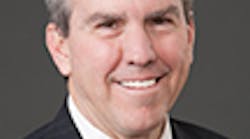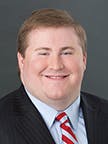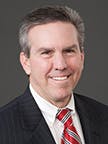Andrew Tucker, JD, CFP
John K. McGill, JD, MBA, CPA
Health savings accounts (HSAs)are the triple tax threat: (1) doctors can make tax-deductible contributions, (2) the funds grow tax free over time, and (3) when used for medical expenses, the funds are dispensed tax free. This makes HSAs much more powerful tax saving tools than retirement plans, where all distributions are taxed at ordinary income rates, or more powerful than Roth IRAs, where contributions cannot be made on a tax-deductible basis.
Despite these benefits, there are still more ways to maximize HSAs. Here are three strategies to take your HSA to the next level.
1
Make catch-up contributions when eligible
Many doctors know that they can make a catch-up contribution when they reach the age of 55, but a common misconception is that this is one contribution per family. Rather, if both spouses are over age 55, both can make a catch-up contribution. While one spouse may need to open a new HSA account in order to fund the contribution, this is an opportunity that doctors should capitalize on before the filing deadline for 2017. Contributions for the 2017 tax year can be made until April 17, 2018.
2
Investing HSA proceeds
Funds held within the HSA can be maintained in a checking or savings account to pay for current or future medical expenses, or can be invested to take advantage of compound investment returns. Unfortunately, a recent survey revealed that only 4% of the respondents invested any portion of their HSA balance.
Many doctors are not aware that they have the option to invest HSA funds in stocks, bonds, or mutual funds, or they do not invest their funds with an HSA custodian that allows them to do so. We strongly recommend that doctors invest all HSA funds in stocks, bonds, and/or mutual funds to maximize tax-free growth. Also, doctors should choose to pay current medical expenses out of their personal funds. Doctors can take advantage of low-cost custodians, which allow them to self-direct investments in stocks, bonds, and mutual funds.
3
Making HSA contributions for children
If children are claimed as dependents on their own (not a parent’s) tax return, they are also eligible to set up their own HSA and deduct contributions to it, up to the yearly family maximum ($6,750 in 2017). Even if the parents make the maximum tax-deductible contribution of $6,750 to their family HSA, the adult child is allowed to make tax-deductible contributions up to the same amount to their own HSA in this situation, since the adult child is covered under a family plan.
What if a child lacks the funds to make these tax-deductible contributions? No problem. Under the law, the doctor can make contributions from his or her own funds into the adult child’s HSA as a tax-free gift. While the doctor will not be allowed to claim a second HSA contribution deduction, children can claim full deductions for the contributions made on their tax returns, up to the family contribution maximum of $6,750 for 2017.
Andrew Tucker, JD, CFP, and John K. McGill, JD, MBA, CPA, provide tax and business planning for the dental profession and publish the McGill Advisory newsletter through John K. McGill & Company Inc., a member of the McGill & Hill Group LLC. This is dentists’ one-stop resource for tax and business planning, practice transition, legal, retirement plan administration, CPA, and investment advisory services. Visit mcgillhillgroup.com.








